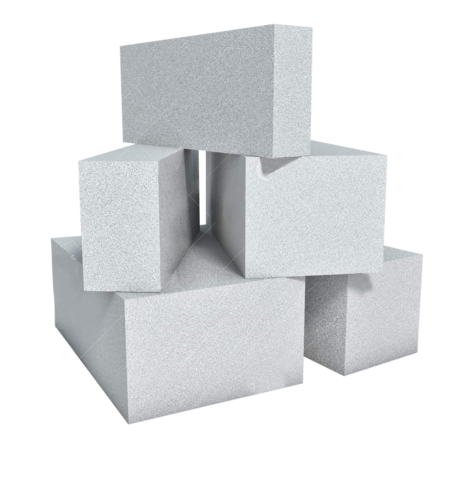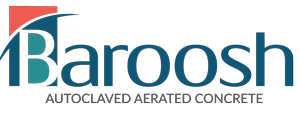Autoclaved aerated concrete block (AAC)
AAC is a type of building material that is used to make walls, floors, and ceilings. AAC stands for Autoclave Aerated Concrete. From a physical point of view, AAC is solid, inelastic and porous, and its density is lower than water. AAC color is grayish-white and somewhat malleable and can be easily cut and polished. This type of concrete is produced from silica, silica sand, cement, lime, aluminum powder, water, under high pressure and temperature. AAC blocks are known as aerated concrete blocks. The autoclaved ventilated block is a type of light block with very high efficiency, which is more than 85 years old. This type of block is used all over the world and in most of the administrative, industrial, residential and hospital buildings. The increase in demand for the use of this type of concrete led to the construction of 51 factories with a production of 31 million cubic meters per year around the world until 1995, and by 1998 this number increased to 150 production units with a capacity of 50 million cubic meters. The year increased. Major producers of this product are located in the continents of Europe, Asia, America and Oceania respectively. Also, two associations (AACPA, American AAC Association) and EAACA (European AAC Association) were established in order to support the production and promotion of AAC in Europe and America.
Characteristics of autoclaved aerated concrete blocks
- The light weight of these blocks is one of their most important features; The low weight of these structures is due to the presence of air bubbles among its particles. For this reason, the density of this product has increased from 2400 kg/m2 to 500 kg/m2, which creates many applications for this product in different industries. Almost 70% of the volume of these blocks consists of air bubbles.
- The next feature of these blocks is the crystalline structure inside them, which increases the compressive strength of this product. In their structure, the usual density is used in the construction of concrete, which is calculated around 450 to 500 kg. Its crystal structure is clear and evident in the photos taken from electron microscopes. Having valid national standards is one of the important features of these concrete blocks.
- The different categories of this product have also created diversity among them, which causes better use of these structures. These items differ in terms of compressive strength and density. To determine the characteristics of each one, their average compressive strength is calculated.
Production and preparation of autoclaved aerated concrete blocks
The production process of these industries is very specialized and professional. In their construction, the dimensions and size of each block are determined and after preparation, they are placed in the respective packages. These packages include wooden pallets that are 1 meter wide and 1.2 meters long and used to hold the blocks.
In order to make and prepare these products completely, a layer of resistant plastic is stretched over it, which is highly resistant to sunlight and prevents damage to the manufactured products. These blocks are produced with special appearance features that make the process of transporting and using them easier. Among them, we can mention the existence of palate and tongue and hand place in them. In this way, many craftsmen welcome these structures. Despite these external features in these structures, their use does not endanger people’s health. Their thickness is determined according to the latest European standards.
The presence of tongue and palate in these products brings other advantages for them. We will mention them below.
Reasons for adding tongue and groove to autoclaved aerated concrete blocks
These structures are used in building construction and the process of porcelain wall in buildings will be completed by using them. The exact alignment of these blocks for the construction and preparation of construction walls is one of the most important advantages of using them, which leads to the quality of construction. Despite them, the arrangement of the wall is done more easily.
Another advantage of the presence of tongue and groove in these structures is to increase the quality resistance of the walls. Despite the tongue and tongue, in the structure of the blocks that make up the wall, lateral forces do not harm these structures and this helps to maintain the quality of the wall.
Block certificates
In addition to valid national standards and official European standards, these concrete blocks have also received sound and thermal insulation certificates, which add to the quality of construction. Health approvals are also one of the most important certifications of these autoclaved aerated concrete blocks.

Hublex block
Habex concrete blocks are a new generation of building materials that have been released to the market. You can check the technical specifications of these products in the PDF file below
